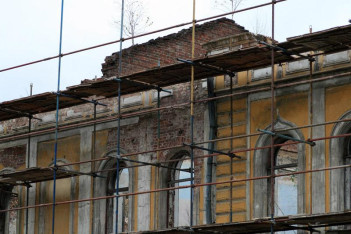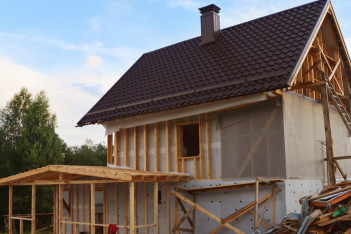Changing the intended purpose of a building
Changing the purpose of a building is an important legal process that allows you to adapt existing real estate to new needs and requirements. Such changes may include transferring buildings from one category to another, for example, from non-residential to residential or from commercial to administrative. However, this process requires compliance with complex legal norms and procedures, including assessing the object's compliance with local urban planning norms and legislative requirements, so people often seek legal assistance.
Legal stages of changing the intended purpose of a building
Changing the purpose of a building is a complex and multi-stage process:
- Analysis of the legal status of a building Initially. a lawyer for changing the intended purpose of a building must determine the legal status of the property: who is the owner, what rights and restrictions exist, what is the current intended purpose and whether it meets the established requirements.
- Preparation of documents. It is necessary to collect and prepare all the necessary documents, including a certificate of ownership, a technical passport of the building, a site plan, documents from the BTI and other materials confirming the status of the building.
- Consulting and preparation of applications. Legal assistance in changing the intended purpose of a building also consists of developing an action plan, consulting the client on the required documents and application forms. The lawyer also helps in preparing and submitting the application to the relevant authorities (for example, to an architectural bureau or local government).
- Conducting an examination. In some cases, an examination conducted by specialists may be required, which confirms the feasibility of changing the purpose of the building. The lawyer coordinates this process and checks the results of the examination.
- Registration of changes. After receiving permission to change the intended purpose of a building in Ukraine, a lawyer helps in registering the change in the intended purpose with government agencies, such as registration authorities or local government.
- Resolution of disputes. If any disputes arise such as a change in the intended purpose of a building or legal obstacles, a lawyer deals with their resolution and represents the client's interests in courts or administrative bodies.
Each stage of legal assistance for changing the purpose of a building contributes to resolving various issues that arise on the way to legalizing the changes. It is important for a lawyer to clearly coordinate all actions, ensuring compliance with legislative requirements and preserving the client's interests at each stage.
Under what conditions can the service of changing the intended purpose of a building be provided?
In order for the legal service of changing the purpose of a building to be provided, there are a number of important conditions:
- Compliance with legislation. Change of the intended purpose of a building lawyer, the service can be provided if the change in the intended purpose complies with current legislation and building codes. It is necessary to ensure that the new use of the building does not conflict with zoning rules or urban planning regulations.
- Availability of all necessary documents. To begin the process, it is necessary to have all the necessary documents confirming the ownership and technical characteristics of the building.
- Consent of all interested parties. If the building is jointly owned or leased, consent of all parties to the change of use is required.
- Absence of debts. At the time of filing the application, there should be no debts for taxes or utility bills, as this may affect the consideration of the application.
Changing the purpose of a building is possible only if all of the above requirements and norms are met.
Under what conditions can the service of changing the intended purpose of a building not be provided?

Violation of urban planning regulations. If the proposed change in the purpose of the building violates urban planning or zoning regulations, the service cannot be provided.

Lack of ownership. If the applicant does not have rights to the building (for example, he is only a tenant or developer), the service will not be provided without the consent of the owner.

Poor technical condition. If the building is in poor condition or does not meet technical requirements, problems with changing the purpose may arise.
How to change the purpose of a building yourself?
Changing the purpose of a building may seem like a difficult task, but it is possible to go through this process on your own, provided that you clearly understand all the stages:
- Studying the legislation. Familiarize yourself with the current urban planning legislation and zoning regulations, what is the process for changing the intended use of the building.
- Checking documents. Check the legal y status and technical characteristics of your building. Make sure all documents are in order and comply with the requirements.
- Collect information from local authorities. Contact your local government or architectural firm to obtain information about the possibility of changing the purpose of the building.
- Consult with professionals. Even if you do your own research, consulting with a lawyer or real estate specialist can greatly simplify the process and reduce risks.
Despite the fact that it is possible to change the purpose of a building on your own, involving a lawyer can significantly reduce the risks and simplify the entire process, ensuring its correctness and speed.
Frequently asked questions about changing the intended purpose of a building
Question
How long does it take to change the purpose of a building?
Answer
The time depends on the complexity of the case and how quickly the documents are processed. Typically, the process takes from several months to a year.
Question
Do I need to conduct a new building survey?
Answer
In some cases, a new survey is required to confirm that the building meets the new requirements.
Question
Is it possible to change the intended use of a building without the consent of the neighbors?
Answer
In some cases, the consent of the neighbors is not required, but in other situations it may be necessary, especially if the changes may affect the surrounding buildings.
What does the cost of changing the purpose of a building depend on?
The price of changing the purpose of a building depends on several factors, such as the complexity of the process, the need to interact with various government agencies, the amount of documentation to be prepared and submitted, as well as local urban planning norms and rules, which may vary depending on the region. In addition, the cost may vary depending on whether the building has legal encumbrances, lawsuits or other restrictions that require additional legal action.
ConclusionChanging the purpose of a building is a multi-stage process that requires legal accuracy and detailed verification of all documents and requirements. Professional legal support ensures proper preparation of documents, interaction with government agencies, and successful obtaining of permits, which ultimately helps to avoid legal complications and ensure the legality of changes.




































